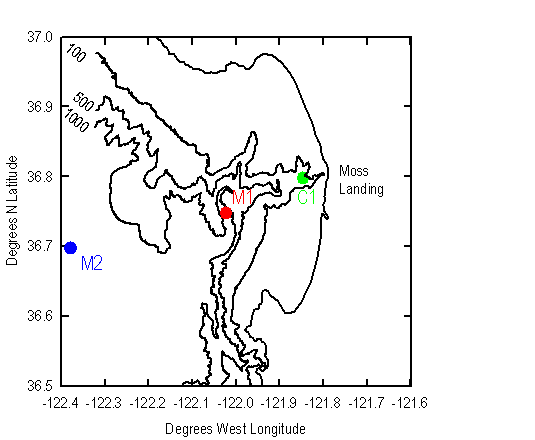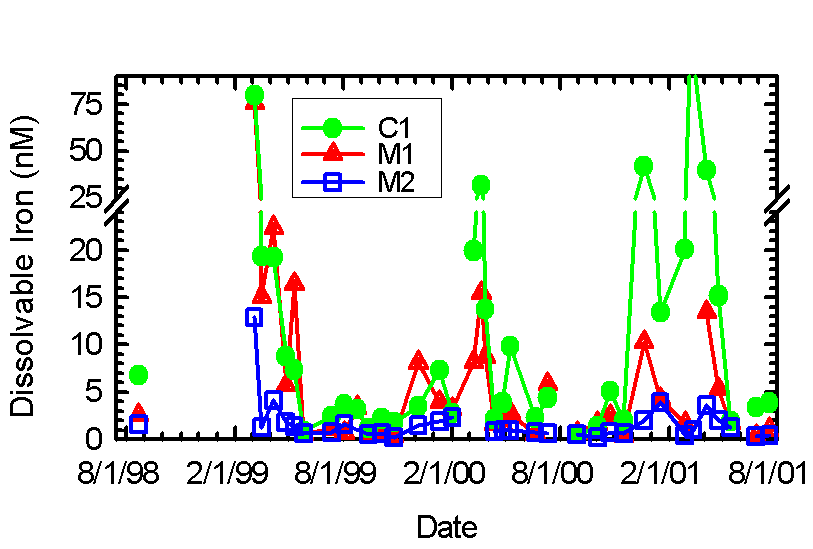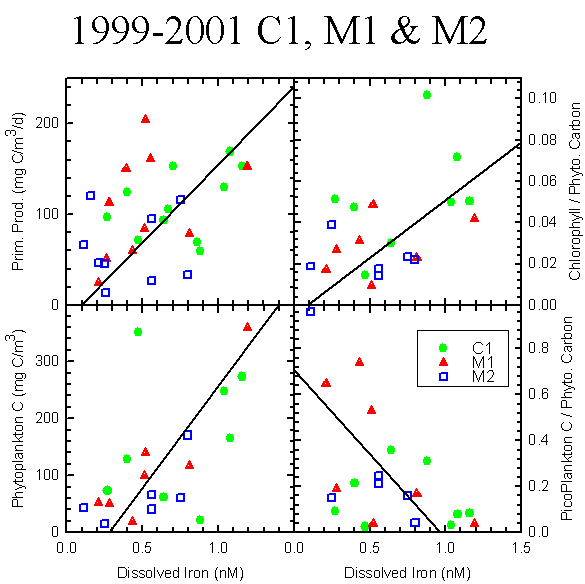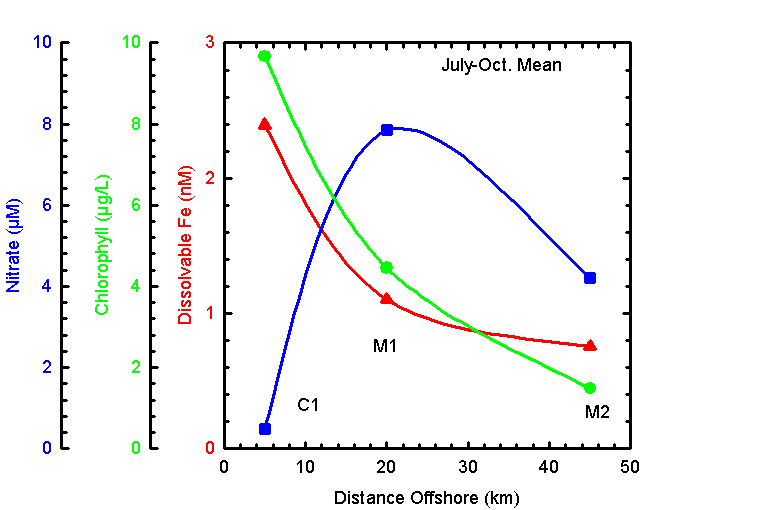Iron Regulation of Coastal Ecosystems
We're studying the impacts of iron on ecosystem processes in the Central
California region (Johnson et al., 1999; Johnson et al., 2001).
Iron
measurements are made every ~20 days at Stations C1, M1 and
M2.

The annual cycle of iron at these stations is characterized by a large pulse
of iron the occurs during the onset of spring upwelling (Johnson et al.,
2001). It is produced by the initial rise of isopycnals that intersect the
continental shelf into the euphotic zone. Once isopycnals tilt up, the
benthic iron source is dampened and iron concentrations drop 100x during the
summer months.

Rates of primary production, biomass (phytoplankton carbon), physiology
(Chlorophyll to carbon ratios), and ecosystem structure (picoplankton C/all
phytoplankton carbon ratio) are all proportional to dissolved iron
concentrations during late June through October. These results are
strong indications that iron does, indeed, control this ecosystem.

Iron concentrations are highest at C1, near the shore. The elevated
iron concentrations allow the phytoplankton to consume nearly all of the nitrate
and produce large chlorophyll concentrations. Slightly further offshore at
M1 and M2, iron concentrations are lower and nitrate is not completely
depleted. Iron deficiency limits the ecosystem in these offshore waters.

References:
Johnson,
K.S., F.P. Chavez, V.A. Elrod, S.E. Fitzwater, J.T. Pennington, K.R. Buck and P.M. Waltz (2001) The annual
cycle of iron and the biological response in central California coastal waters. Geophysical
Research Letters, 28, 1247-1250.
Johnson, K.S., F.P. Chavez and G.E. Friederich (1999)
Continental-shelf sediment as a primary source of iron for coastal
phytoplankton. Nature, 398, 697-700.
Last updated:



